What Is A Group Of Penguins Called, you might wonder? A gathering of these delightful birds boasts several unique names, including a raft in the water and a waddle on land. At WHAT.EDU.VN, we provide you with intriguing facts and answers to all your curious questions, ensuring you get the information you need quickly and easily. Delve into the fascinating world of penguin nomenclature, group behaviors, and habitat with our comprehensive insights into penguin colonies and penguin huddles.
1. Collective Nouns for Penguins: Beyond the Basics
When discussing groups of penguins, the terms “raft,” “waddle,” “rookery,” “colony,” and “huddle” are commonly used, but each term paints a different picture of penguin behavior and location. Understanding these terms enriches our appreciation for these remarkable creatures.
1.1. Raft: Penguins at Sea
A group of penguins in the water is called a raft. This term evokes images of penguins floating together, perhaps resting or fishing. The collective noun “raft” beautifully captures the essence of penguins navigating the ocean.
1.2. Waddle: Penguins on Land
On land, a group of penguins is called a waddle. The term “waddle” perfectly describes the way penguins move on land – a charming, side-to-side shuffle that is both endearing and efficient.
1.3. Rookery: A Breeding Colony
When penguins gather to breed, their colony is often referred to as a rookery. A rookery is a bustling, noisy place filled with nests, eggs, and young chicks. These breeding colonies are vital for the survival of penguin species.
1.4. Colony: A General Gathering
“Colony” is a more general term used to describe a large group of penguins, regardless of their activity. A penguin colony can consist of hundreds or even thousands of individuals.
1.5. Huddle: Penguins Staying Warm
During harsh weather conditions, penguins often huddle together to stay warm. A huddle is a tightly packed group of penguins, sharing body heat to survive the cold.
2. Penguin Camouflage: The Tuxedo Effect
The classic black and white plumage of most penguin species isn’t just for show; it’s a clever camouflage technique known as countershading. This adaptation helps penguins evade predators and sneak up on prey.
2.1. Countershading Explained
Countershading works by making an animal less visible in the water. From above, the penguin’s black back blends with the dark depths of the ocean. From below, its white belly blends with the bright surface.
2.2. Evolutionary Advantage
This camouflage gives penguins a significant advantage in their marine environment. It helps them avoid detection by predators like seals and orcas, while also making it easier to hunt fish and krill.
2.3. Variations Among Species
While most penguins sport the classic black and white look, some species have variations in their plumage. For example, the Emperor penguin has patches of yellow on its neck, while the Little Blue penguin has blue feathers.
3. The Importance of Huddling
Penguins huddle together for a variety of reasons, most notably to protect themselves from predators and to conserve warmth in frigid environments. This behavior is crucial for their survival.
3.1. Predator Protection
A large group of penguins can deter predators. The sheer number of birds makes it harder for predators to single out an individual. Additionally, penguins can use their beaks and flippers to defend themselves.
3.2. Thermoregulation
In extremely cold climates, huddling is essential for penguins to maintain their body temperature. By packing together tightly, they reduce their exposure to the elements and share body heat.
3.3. Social Benefits
Huddling also has social benefits. It strengthens bonds within the colony and provides a sense of security. Penguins take turns being on the outside of the huddle, ensuring that everyone gets a chance to warm up.
4. Penguin Adaptations: Flying Underwater
Penguins are flightless birds, but they are incredibly well-adapted for swimming. Their bodies have evolved to make them efficient underwater hunters.
4.1. Solid Bones
Unlike most birds, penguins have solid bones rather than hollow ones. This adaptation reduces buoyancy, making it easier for them to stay submerged and swim efficiently.
4.2. Streamlined Body
Penguins have a streamlined body shape that reduces drag in the water. Their wings have evolved into flippers, which they use to propel themselves through the water with powerful strokes.
4.3. Dense Feathers
Penguins have a dense layer of feathers that traps air, providing insulation and buoyancy. These feathers are also coated with waterproof oil, which helps keep the penguins dry and warm.
5. Waterproofing: The Secret to Staying Dry
Penguins have a special gland near the base of their tail that produces waterproof oil. They spend hours each day preening their feathers, spreading this oil to keep them dry and insulated.
5.1. Preening Process
Preening is a vital activity for penguins. They use their beaks to carefully distribute the waterproof oil over their feathers, ensuring that every feather is coated.
5.2. Importance of Waterproofing
Waterproofing is essential for penguins’ survival. It prevents their feathers from becoming waterlogged, which would make them cold and heavy. Waterproofing also helps penguins maintain their buoyancy in the water.
5.3. Gland Location
The uropygial gland, also known as the preen gland, is located on the penguin’s back near the base of its tail. This gland secretes an oily substance that penguins use to waterproof their feathers.
6. Penguin Habitats: More Than Just Antarctica
While many people associate penguins with Antarctica, these birds actually live in a variety of locations and habitats around the Southern Hemisphere.
6.1. Diverse Locations
Penguins can be found in Antarctica and Antarctic islands, the Galapagos Islands off the coast of Ecuador, South Africa, New Zealand, Australia, Peru, and Chile.
6.2. Climate Variations
Penguins have adapted to a wide range of climates, from the icy cold of Antarctica to the warm, tropical environment of the Galapagos Islands.
6.3. Habitat Preferences
Different penguin species have different habitat preferences. Some prefer rocky coastlines, while others prefer sandy beaches or ice floes.
7. Penguins and Polar Bears: A Geographic Divide
Despite often being depicted together in holiday cartoons, penguins and polar bears never encounter each other in the wild. This is because they live on opposite ends of the Earth.
7.1. Polar Bear Territory
Polar bears live in the Arctic, north of the equator. They are well-adapted to the cold, icy conditions of the Arctic and rely on seals as their primary food source.
7.2. Penguin Territory
Penguins live south of the equator, primarily in the Southern Hemisphere. They are found in a variety of habitats, from the icy shores of Antarctica to the warmer coasts of South Africa and South America.
7.3. No Overlap
Because their habitats are geographically separated, penguins and polar bears never interact in the wild. This makes the image of them together in cartoons inaccurate and misleading.
8. Penguin Feet: Designed for Walking and Swimming
Penguin feet are specially adapted for both walking long distances on land and steering in the water. Their feet are strong, webbed, and positioned far back on their bodies.
8.1. Walking Long Distances
Some penguin species can march up to 60 miles across sea ice to reach their breeding grounds. Their feet are strong and sturdy, allowing them to navigate the harsh terrain.
8.2. Steering in Water
Penguins use their feet like rudders to steer while swimming. By angling their feet, they can control their direction and maneuver quickly through the water.
8.3. Webbed Feet
The webbed feet of penguins provide extra propulsion in the water. The webbing increases the surface area of their feet, allowing them to generate more force with each kick.
9. Penguin Courtship: The Gift of Rocks
Many male penguins woo female penguins by gifting them with rocks. These rocks are used by the females to build nests.
9.1. Nest Building
Penguin nests are typically simple structures made of rocks, pebbles, and other materials found in their environment. The nests provide a safe place for the penguins to lay their eggs and raise their chicks.
9.2. Significance of Rocks
Rocks are a valuable commodity in many penguin habitats. They are used to build nests, mark territory, and even attract mates.
9.3. Courtship Ritual
The act of gifting rocks is a crucial part of penguin courtship. It demonstrates the male’s commitment to providing for the female and helping her build a nest.
10. Penguin Hydrodynamics: Nature’s Streamlined Design
Penguins are among the most streamlined animals in the world, according to some animal experts. Their body shape is perfectly adapted for swimming at high speeds.
10.1. Tapered Body
A penguin’s body is tapered at both ends, reducing drag in the water. This streamlined shape allows them to move through the water with minimal resistance.
10.2. Body Proportions
Penguins have a large head, short neck, and elongated body. These proportions contribute to their streamlined shape and help them swim efficiently.
10.3. Evolutionary Advantage
The streamlined design of penguins gives them a significant advantage in their marine environment. It allows them to swim faster, catch prey more easily, and evade predators more effectively.
11. Frequently Asked Questions About Penguins
| Question | Answer |
|---|---|
| What do penguins eat? | Penguins primarily eat fish, krill, squid, and other small marine animals. The specific diet varies depending on the species and location. |
| How long do penguins live? | The lifespan of penguins varies depending on the species. Some penguins live for 15-20 years, while others can live for 50 years or more. |
| How do penguins stay warm in cold climates? | Penguins have several adaptations that help them stay warm, including a dense layer of feathers, a layer of blubber, and the ability to huddle together in large groups. |
| Are penguins endangered? | Some penguin species are endangered or threatened due to habitat loss, climate change, pollution, and overfishing. Conservation efforts are underway to protect these vulnerable species. |
| How do penguins communicate? | Penguins communicate through a variety of vocalizations, body language, and visual displays. They use these signals to attract mates, defend territory, and coordinate activities within the colony. |
| What is the largest penguin species? | The Emperor penguin is the largest penguin species, standing up to 4 feet tall and weighing up to 90 pounds. |
| What is the smallest penguin species? | The Little Blue penguin is the smallest penguin species, standing about 16 inches tall and weighing about 2 pounds. |
| How do penguins raise their chicks? | Penguin parents share the responsibility of incubating the eggs and raising the chicks. They take turns foraging for food and protecting the nest from predators. |
| What are some threats to penguin populations? | Threats to penguin populations include climate change, which affects their food supply and breeding habitats, as well as pollution, overfishing, and habitat destruction. |
| Where can I see penguins in the wild? | Penguins can be seen in the wild in Antarctica, South Africa, South America, Australia, New Zealand, and the Galapagos Islands. Each location offers a unique opportunity to observe different penguin species. |
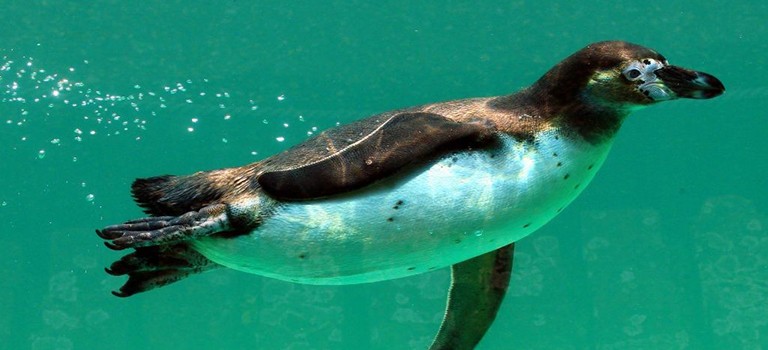
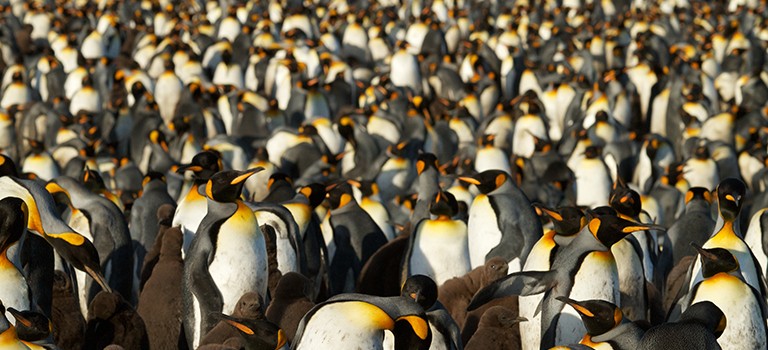
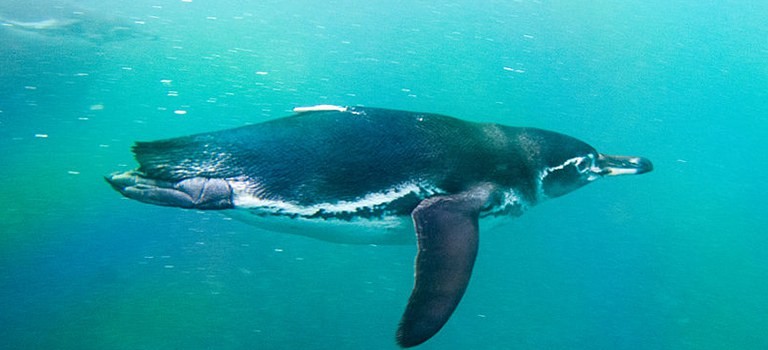
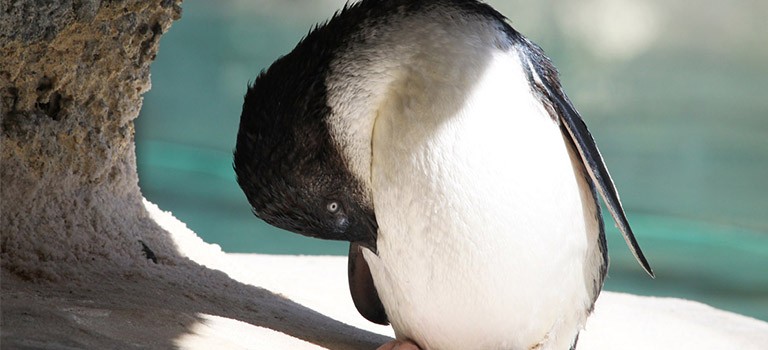
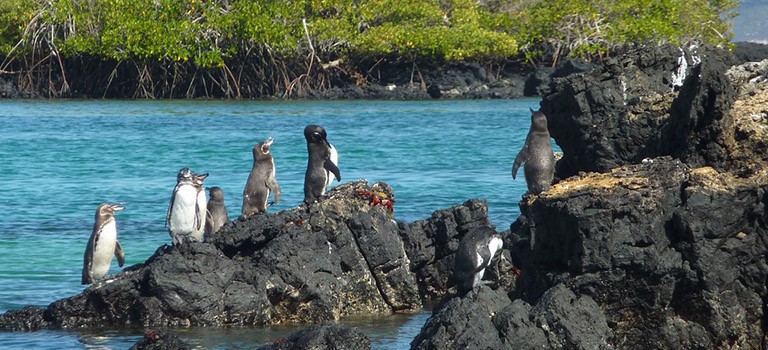
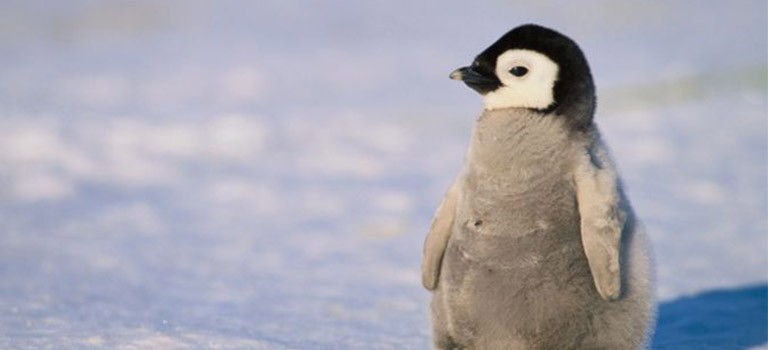
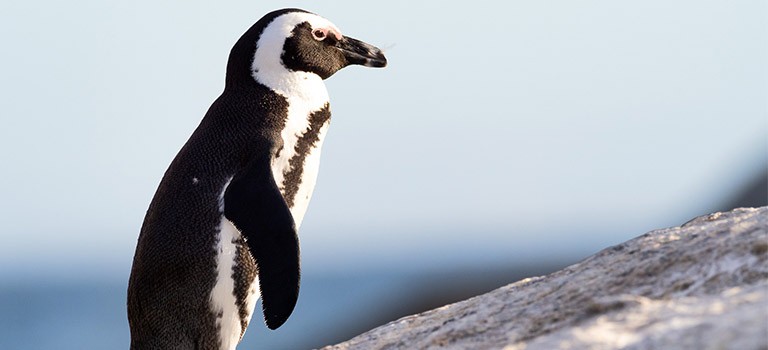
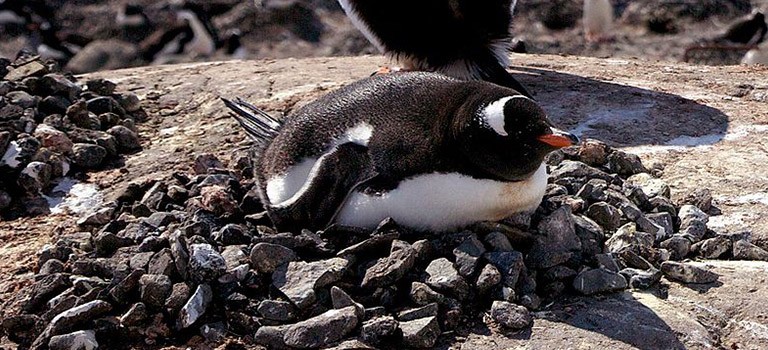
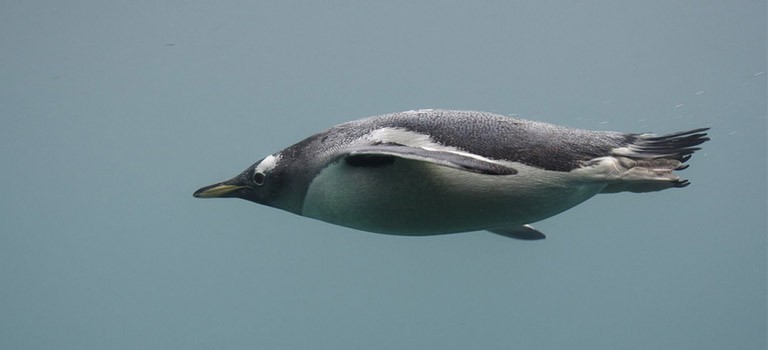
12. Understanding Penguin Behavior: A Deeper Dive
Penguin behavior is complex and fascinating, shaped by their environment and social structures. Understanding their behavior can provide insights into their survival strategies and adaptations.
12.1. Social Interactions
Penguins are highly social animals, living in large colonies that can number in the thousands. They engage in various social behaviors, including cooperative hunting, mutual grooming, and communal chick-rearing.
12.2. Mating Rituals
Penguin mating rituals are elaborate and often involve vocalizations, displays, and gift-giving. These rituals help to establish pair bonds and ensure successful breeding.
12.3. Foraging Strategies
Penguins are skilled hunters, using their streamlined bodies and powerful flippers to pursue prey underwater. They often forage in groups, increasing their chances of success.
13. The Role of Penguins in the Ecosystem
Penguins play a crucial role in the marine ecosystem. They are both predators and prey, helping to maintain the balance of marine life.
13.1. Predators
Penguins are predators of fish, krill, squid, and other small marine animals. They help to control the populations of these species, preventing them from becoming overabundant.
13.2. Prey
Penguins are prey for seals, sea lions, orcas, and other marine predators. They provide a food source for these animals, helping to support the marine food web.
13.3. Indicators of Ecosystem Health
Penguin populations are often used as indicators of ecosystem health. Declines in penguin populations can signal problems in the marine environment, such as pollution, overfishing, or climate change.
14. Conservation Efforts: Protecting Penguins
Many penguin species are facing threats due to human activities. Conservation efforts are essential to protect these birds and their habitats.
14.1. Habitat Protection
Protecting penguin habitats is crucial for their survival. This includes establishing marine protected areas, reducing pollution, and mitigating the impacts of climate change.
14.2. Sustainable Fishing Practices
Sustainable fishing practices are needed to ensure that penguins have enough food to eat. This includes setting catch limits, reducing bycatch, and managing fisheries responsibly.
14.3. Climate Change Mitigation
Mitigating climate change is essential to protect penguins from the impacts of rising temperatures, sea level rise, and ocean acidification. This requires reducing greenhouse gas emissions and transitioning to a low-carbon economy.
15. Discover More Fascinating Facts on WHAT.EDU.VN
At WHAT.EDU.VN, we’re dedicated to providing you with accurate and engaging answers to all your questions. Whether you’re curious about animal behavior, scientific phenomena, or historical events, we’re here to help you learn and explore.
Are you struggling to find quick, reliable answers to your burning questions? Do you wish you had a platform where you could ask anything and get insightful responses from knowledgeable individuals? Look no further than WHAT.EDU.VN. We understand the challenges of finding accurate information quickly and the frustration of not knowing where to turn for answers. That’s why we’ve created a user-friendly platform where you can ask any question and receive prompt, informative answers for free.
16. Experience the Ease of Asking Questions on WHAT.EDU.VN
At WHAT.EDU.VN, we believe that knowledge should be accessible to everyone. That’s why we offer a free platform where you can ask any question and receive answers from a community of knowledgeable experts.
16.1. Quick and Accurate Answers
Our platform is designed to provide you with quick and accurate answers to your questions. Whether you’re a student, a professional, or simply curious, you can rely on WHAT.EDU.VN to provide you with the information you need.
16.2. User-Friendly Interface
Our website features a user-friendly interface that makes it easy to ask questions and find answers. Simply type your question into the search bar, and our system will connect you with relevant information and experts.
16.3. Community of Experts
WHAT.EDU.VN is powered by a community of experts who are passionate about sharing their knowledge. Our experts come from a variety of backgrounds and fields, ensuring that you receive well-informed and comprehensive answers.
17. Connect with Us
For more information, feel free to reach out to us:
- Address: 888 Question City Plaza, Seattle, WA 98101, United States
- WhatsApp: +1 (206) 555-7890
- Website: WHAT.EDU.VN
18. Call to Action: Ask Your Questions Today
Don’t let your curiosity go unanswered. Visit WHAT.EDU.VN today and ask any question you have. Our community of experts is ready to provide you with the information you need, quickly and for free. Join the what.edu.vn community and start exploring the world of knowledge today. Whether it’s “What is a group of penguins called?” or something entirely different, we’re here to provide the answers you seek.